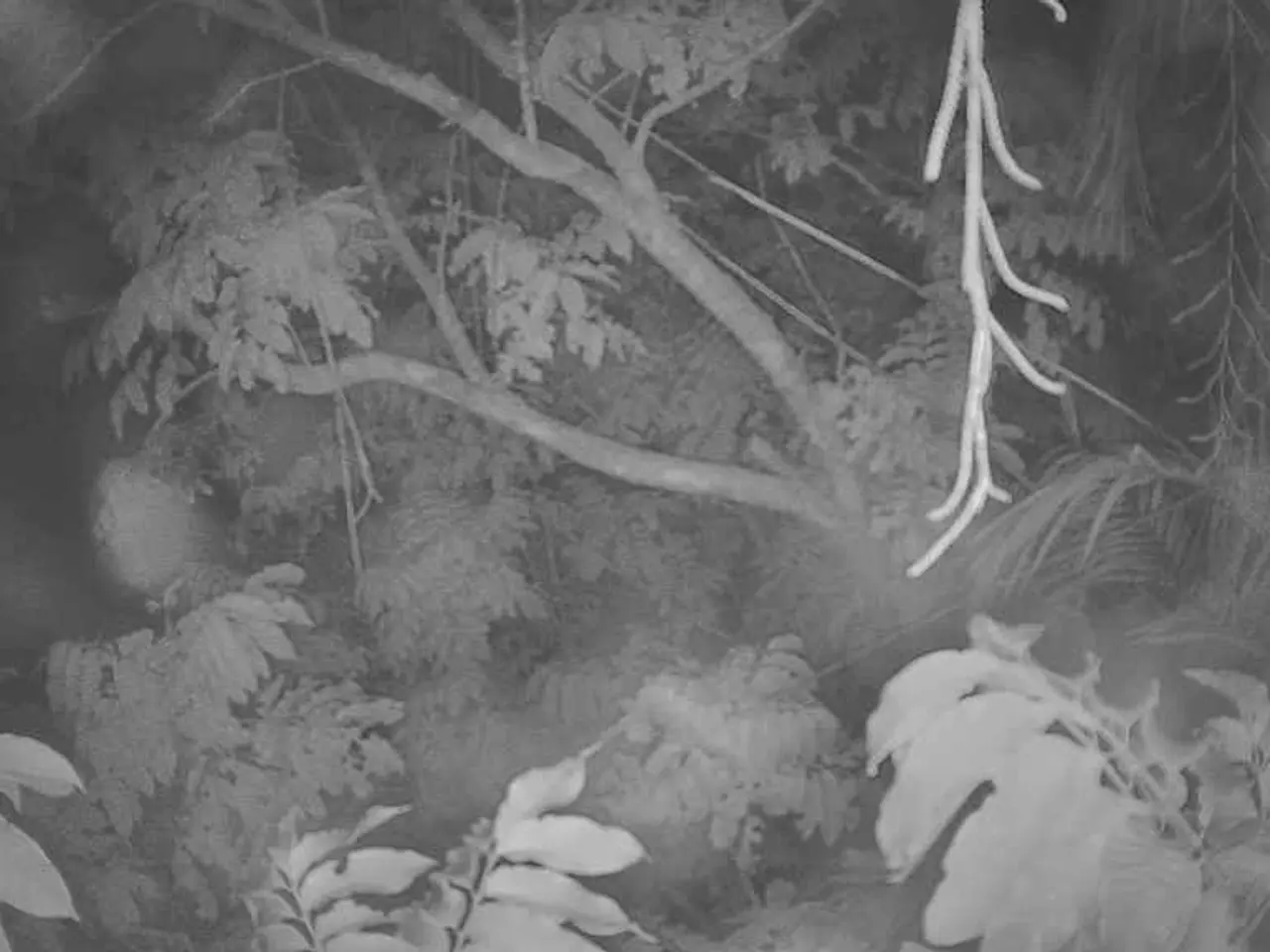Six tree species facing potential extinction: an overview
In an effort to combat the alarming rate of tree species extinction, gardeners can make a significant contribution by cultivating and nurturing threatened tree species in their own gardens. A new book, "The Little Book of Disappearing Trees," published by Forestry England, highlights 50 endangered tree species, many of which are grown at Westonbirt Arboretum, providing a practical guide for gardeners to support conservation efforts.
One of the most direct ways gardeners can help is by growing threatened native tree species that are well-suited to their local conditions and care requirements. This not only helps preserve genetic material but can also support local ecosystems and increase biodiversity. For example, endangered trees like the yellow anise can be grown in suitable climates, offering a refuge for species at risk in the wild. It is essential to ensure that cultivated plants are sourced responsibly to avoid contributing to overcollection from wild populations.
In addition to cultivating threatened species, gardeners can enhance biodiversity in their landscapes by planting a mix of perennials, including trees, shrubs, climbers, and herbaceous plants. This not only provides year-round habitat and food for wildlife but also supports ecosystem health and resilience. Biodiversity-friendly practices, such as reducing pesticide and herbicide use, letting lawns grow longer to allow wildflowers, and creating water features, can make gardens more hospitable for wildlife and threatened tree species alike.
Gardeners can also engage with botanical conservation networks, contributing to broader conservation efforts. Botanical gardens and organizations coordinate efforts to conserve threatened plants through seed banks and living collections, sometimes engaging local gardeners in citizen science, propagation, and awareness campaigns. Participating in these initiatives can help prioritize species most at risk.
Education and advocacy are crucial components of conservation efforts. Gardeners are uniquely positioned to raise awareness about the plight of threatened trees, educating neighbours, participating in local conservation groups, and advocating for policies that protect natural habitats. Encouraging responsible horticultural trade and avoiding the purchase of illegally or unsustainably collected plants is also critical.
Westonbirt, The National Arboretum, houses a collection of 15,000 specimen trees of national and international significance. The book "The Little Book of Disappearing Trees" profiles 50 of the threatened species that grow at Westonbirt, detailing each species' plight, conservation efforts, and research work. Over 100 tree species classified as threatened on the IUCN Red List are cared for at Westonbirt Arboretum.
Examples of endangered species include the Atlas cedar, which is suffering from pests and diseases due to climate change, timber exploitation, and overgrazing, and the Star magnolia, native to Japan, which is threatened by urbanisation and illegal collecting. The Giant redwood, native to California, is an endangered species due to human exploitation and past forest fire management, while the Maidenhair tree is threatened by habitat loss and timber exploitation.
Co-author of Forestry England's "The Little Book of Disappearing Trees," Dan Crowley, states that growing threatened species in collections like Westonbirt Arboretum is an essential insurance policy for these species. By taking action in their own gardens and supporting conservation efforts, gardeners can play a proactive role in conserving threatened tree species, collectively supporting global conservation goals and helping safeguard the ecological services that trees provide.
| Action | Conservation Impact | Example/Notes | |-----------------------------------|------------------------------------------|-----------------------------------------------| | Cultivate threatened natives | Preserves genetic diversity | Illicium parviflorum in suitable climates[1] | | Plant diverse perennials | Supports pollinators and other wildlife | Trees, shrubs, climbers, herbaceous plants[4] | | Reduce pesticides/herbicides | Protects beneficial insects and soil life | Promotes natural pest control[4] | | Support botanical gardens/seed banks | Contributes to ex situ conservation | Participation in seed exchange programs[2] | | Educate and advocate | Builds community support for conservation | Local workshops, social media, advocacy |
Sources: [1] Forestry England (2021). The Little Book of Disappearing Trees. [2] Royal Botanic Gardens, Kew (2021). Million Seed Bank Partnership. [3] International Union for Conservation of Nature (2021). IUCN Red List. [4] RHS (2021). Biodiversity in Gardens.
- In their home gardens, gardeners can grow and preserve threatened tree species like the yellow anise, providing a safe haven for the species in the face of extinction.
- By cultivating native trees that are suitable for their local conditions, gardeners can help preserve genetic diversity and increase biodiversity in their landscapes.
- To enhance biodiversity, gardeners can plant a variety of perennials, such as trees, shrubs, climbers, and herbaceous plants, creating habitat and food for wildlife year-round.
- Adopting biodiversity-friendly practices, such as reducing pesticide and herbicide use, and creating water features can make gardens more welcoming for both wildlife and threatened tree species.
- Engaging with botanical conservation networks can allow gardeners to contribute to broader conservation efforts, such as propagation, citizen science, and awareness campaigns.
- Education and advocacy efforts by gardeners can raise awareness about endangered trees and influence policies protecting natural habitats, encouraging responsible horticultural trade, and educating others.
- Westonbirt Arboretum houses a significant collection of threatened tree species, such as the Atlas cedar, Star magnolia, Giant redwood, and Maidenhair tree, providing a vital role in conservation efforts.
- The co-author of Forestry England's "The Little Book of Disappearing Trees," Dan Crowley, emphasizes the importance of growing threatened species in collections like Westonbirt Arboretum as an "insurance policy" for these at-risk species.
- Gardeners seeking inspiration and guidance can refer to educational resources like "The Little Book of Disappearing Trees" and "RHS Biodiversity in Gardens" to learn more about threatened tree species care requirements, conservation efforts, and research.
- In addition to supporting threatened tree species and biodiversity, practicing sustainable gardening and incorporating eco-friendly life changes in one's home-and-garden lifestyle can contribute to personal growth, career development, and overall mental health and wellness.




